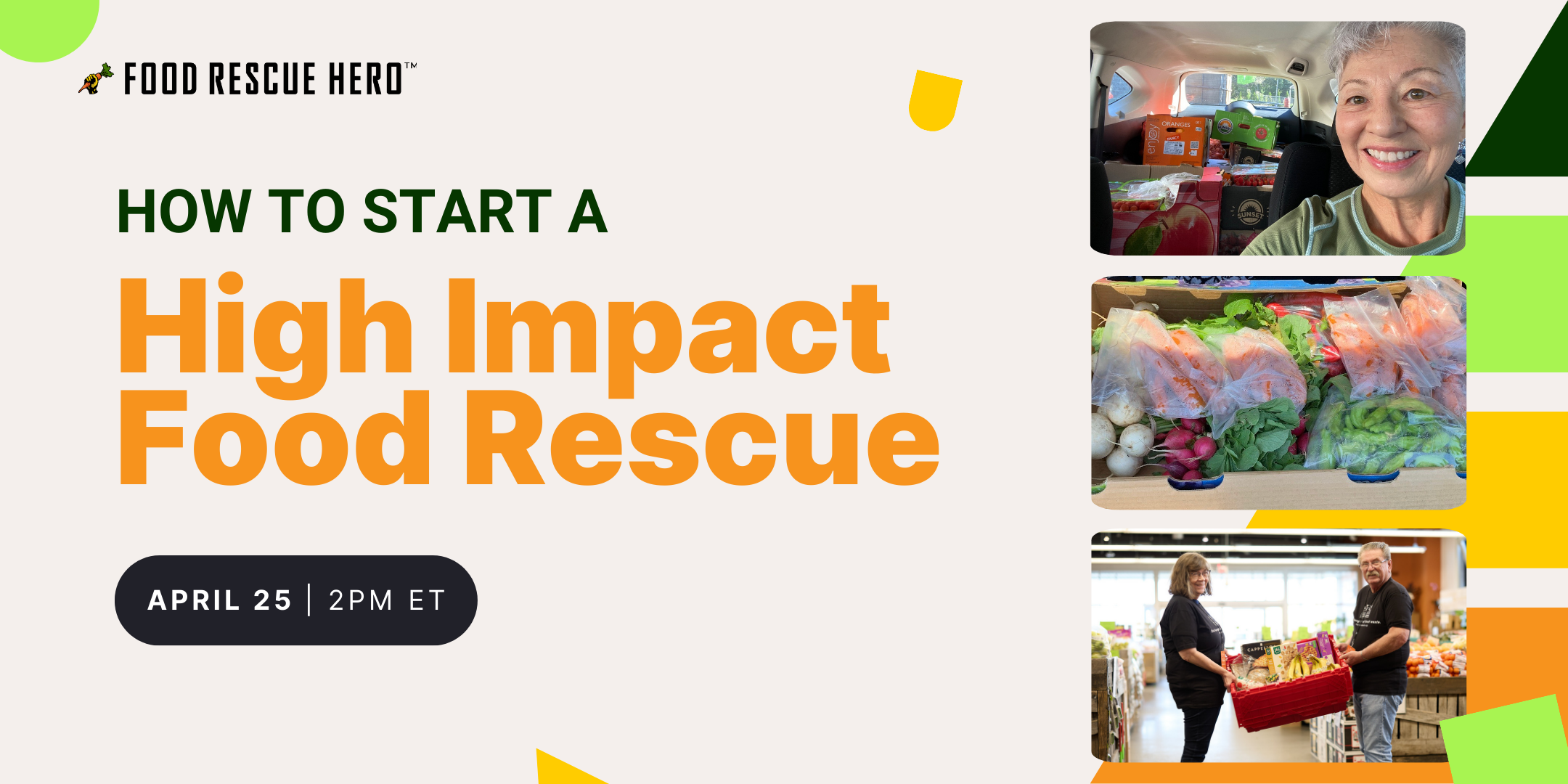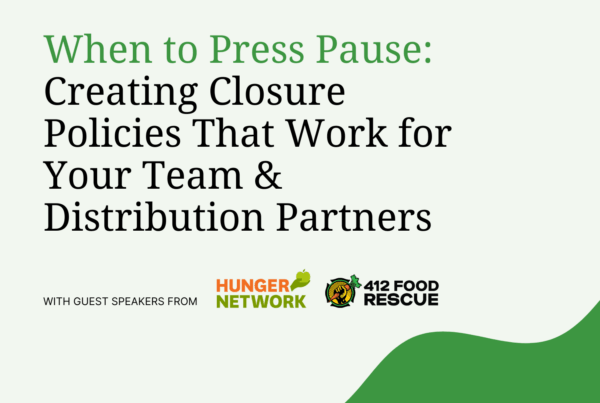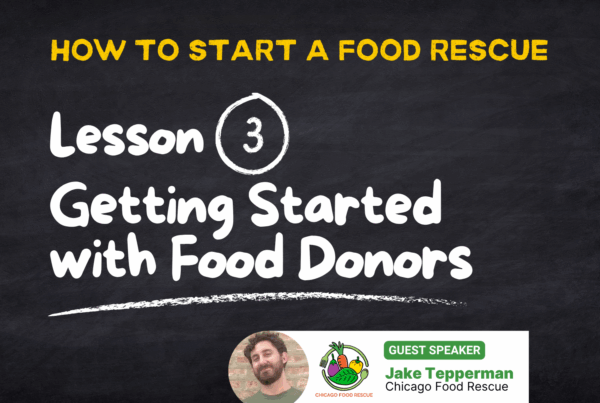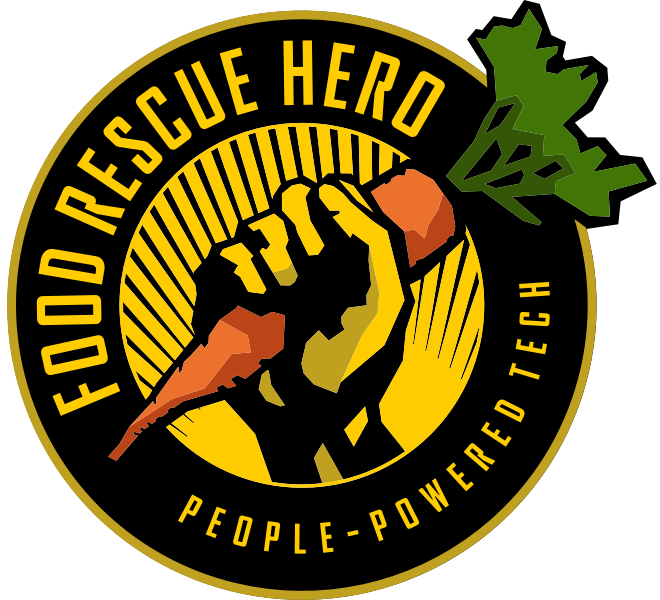Starting a food rescue organization can be as easy as finding your first donor. But to deliver the most impact, it’s helpful to take a systemic approach that addresses both food insecurity and food waste. The five essential pillars to consider when starting a food rescue include organization building, reducing food waste, transportation, distribution, and data management.
Watch our April 2024 webinar:
"How to Start a High Impact Food Rescue"
How do we define high-impact food recovery?
A high-impact food recovery organization takes a systematic approach to both reducing food insecurity and food waste in your community. In the United States, 1 in 8 households are food insecure – lacking access to affordable, nutritious food. This represents about 44.2 million Americans. Meanwhile food waste is a major contributor to greenhouse gas emissions. In fact, throwing good food away has a greater impact on the climate than global air traffic.
To create a high-impact food recovery, we have to go beyond the single weekly rescue – rather, it’s about optimizing effort to make the greatest impact possible. Using the following five pillars, you can create a high-impact food recovery in your own community.
5 pillars to starting a high-impact food rescue:
1. Organization building
There are options for what kind of legal entity to create (or not create) for your new organization, each with pros and cons:
Create a new 501(c)(3)?
- Don’t have to find a partner
- Complete editorial control over direction
- Opportunity to build a board supportive of food recovery
- Not competing for funds within an organization
Nest within an existing organization?
- Shorter runway
- Don’t have to start fundraising from scratch
- Existing organizational support staff such as development and communications
- Jump start on volunteer pool
In order for your food recovery operations to be successful, it’s critical to create a business plan that lays out your staffing needs, growth trajectory, and anticipated impact.
When it comes to staffing, be realistic; expect to begin with a lean organization that will grow and evolve over time but also recognize that you will need full time employees to run this. To be high impact, it can’t be a volunteer project. This sample staffing plan lays basic coverage for food rescue operations and organizational support:
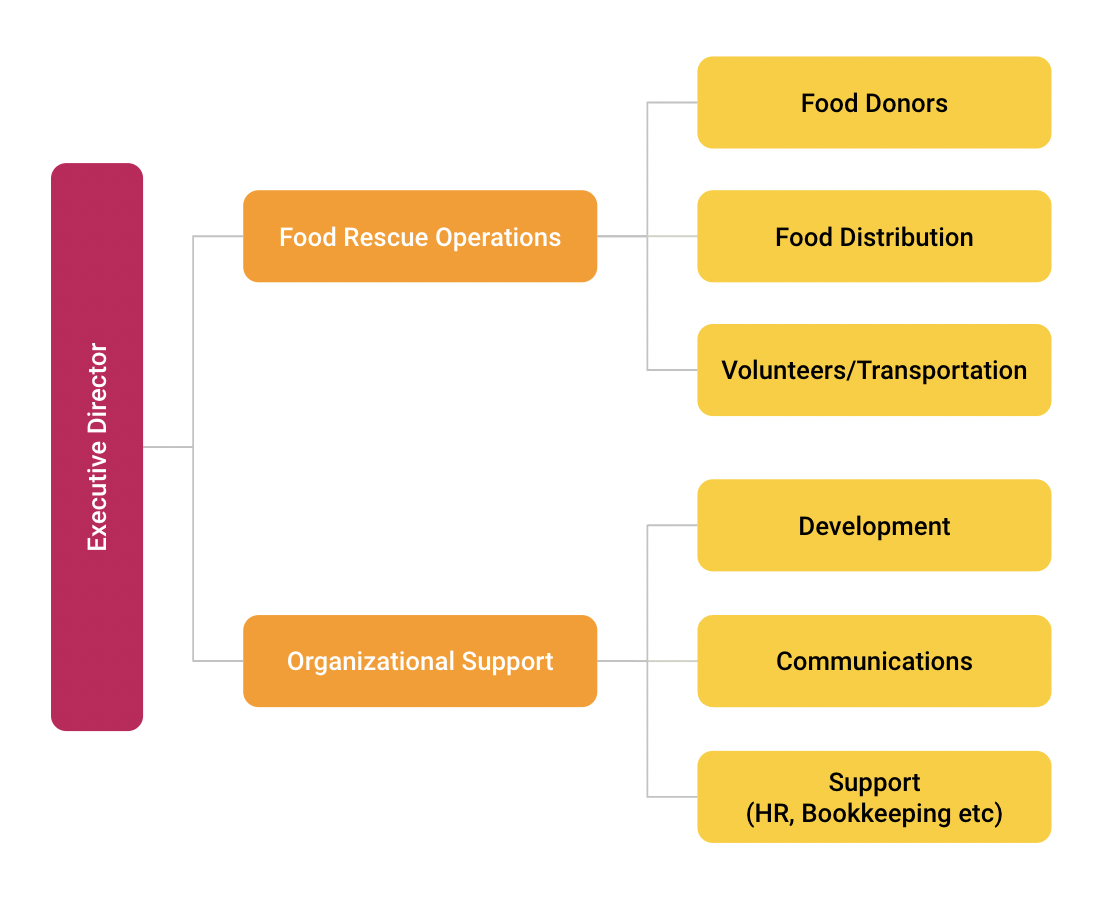
Funding is key for building a high-impact food rescue organization that can scale to meet the needs of your community. Know how to talk to funders. Use data to demonstrate your impact and show proof of product. Plan to start collecting rescue data on day one!
More resources on Organization Building:
2. Reduce food waste with food donor relationships
Partner with food donors in your community to reduce food waste. Potential donors can be any organization with a commercial kitchen or that sells food. Typical food donors include supermarkets, supercenters, natural/gourmet stores, and convenience stores.
Thinking outside of the box will help you cast a wider net:
- Hospitals
- Schools
- Bakeries
- Restaurants
- Office buildings
- Event and sports venues
Food recovery organizations offer a critical service to food donors and are essential in the fight against food waste. Pantries typically have limited open hours and food banks are closed over the weekend. Food Recovery organizations
It’s important to meet food donor partners where they are; food rescue organizations serve their donors just as much as their other partners. Offer pickup options 7 days a week, and be open to one-time rescues in addition to scheduled donations. Never say no to a food donation (when possible) – offering creative solutions to help donors in a pinch can make them a loyal partner and financial supporter. Small donors also play an important part in your local impact.
Strive to be the AND, not the OR – if there’s food already successfully being rescued, there’s no reason to disrupt that. Make your organization available to fill in the gaps, either with picking up on days when no one else can, or rescuing types of food not taken by other organizations due to transport/storage restraints. Aim for equilibrium to partner with others in the system to make sure large donations don’t go to waste. Since many traditional food pantries and food banks are limited in the amount of fresh food they distribute, food recovery organizations are additive to these existing systems.
More resources on Reducing Food Waste:
3. Transportation of food via fleet & volunteers
There are two basic transportation options for food recovery organizations: fleets and volunteers. Fleets can require a big up front investment and can be expensive to run and maintain. They are most efficient and impactful when geared towards large donations. On the flip side, recruiting volunteers to pick up and drop off rescued food with their personal vehicles provides a more mobile and responsive network. This volunteer model is highly flexible for a highly distributed system of surplus food. Especially for startup food rescue organizations, relying on a network of volunteers is a great way to jumpstart the organization at a low cost. You can manage multi-pallet distributions using just volunteers and their cars!
“How do we find volunteers?”
Finding volunteers can be as simple as just making the ask. Put the details on your social media platforms, send emails, and ask potential volunteers to share with their friends and family. In fact, use your own personal network to find people already invested in what you do!
Finding volunteers is one hurdle, but keeping them engaged is another. To make a volunteer network function well, you must make it easy for people to help, as well as continued opportunities to help. Give them all the details they need to successfully connect with the food donor and drop off the food with your nonprofit partner–the fewer hiccups they encounter, the more likely they are to keep volunteering!
As your operations grow, make sure that your volunteer outreach efforts scale as your donor base expands. Remember, new volunteer recruitment is an ongoing process!
More resources on Transportation / Volunteer management:
4. Distribution Network
As with food donors, you’ll want to cast a wide net when building out your distribution network. Look for nonprofit partners who can take food immediately on a regular basis and/or daily, in addition to ones that need to rely on fixed delivery dates such as pantries and shelters with limited hours of operation. The former type of partner benefits greatly from working with food recovery organizations, since food rescue focuses primarily on fresh and perishable food, which is less likely to work for food banks or pantries due to limited open hours, time from delivery to distribution and storage restrictions.
Some options include:
- Subsidized housing
- Housing authorities
- Head start programs
- Food pantries & churches
- WIC offices
- Job training centers
As a result, a key part of food rescue has become increasing food access in our communities. To make the most impact, look for places where people who are experiencing food insecurity are already going (daycare centers, school pickups, etc.) as potential nonprofit partners to receive surplus food. The easier you make it for recipients to access food, the larger your impact will be.
More resources for Distribution:
5. Data (Measurement)
As your food rescue organization grows, you need to quantify your impact to show donors that their investment is worthwhile. Data is key to tell your story and inform your growth. Consider the data stories that will motivate each of our audiences:
- Financial donors
- Media
- Volunteers
- Food donors
Tracking ongoing impact shows proof of product. Report on these metrics from DAY ONE to fully express your impact story:
- Weight
- # of rescues
- # of donations for each donor
- # of donations received at nonprofits
- Breakdown of food: rescued food is 80-90% fresh. Don’t include canned produce in the same category as fresh! Put all non-perishable in one category, then break out the fresh food categories: produce, baked goods, protein, dairy, etc
More resource for Data:
A Call to Action
The most important way to create a high-impact food rescue is to dive in and get started! Don’t be afraid to make one relationship, and start with one rescue from one place. Get a feel for what the food rescue system looks like in your community and build off that.
As you learn and grow, remember to continue documenting impact through quantitative data and firsthand stories of impact from food donors, nonprofit partners, and volunteers; all of this will help you build a track record that shows funders, distribution partners and community supporters your impact.
When it comes to building a high-impact food recovery program, build for growth.
More resources:


